Ashura - Zile de doliu - Khorramabad, Iran 2019
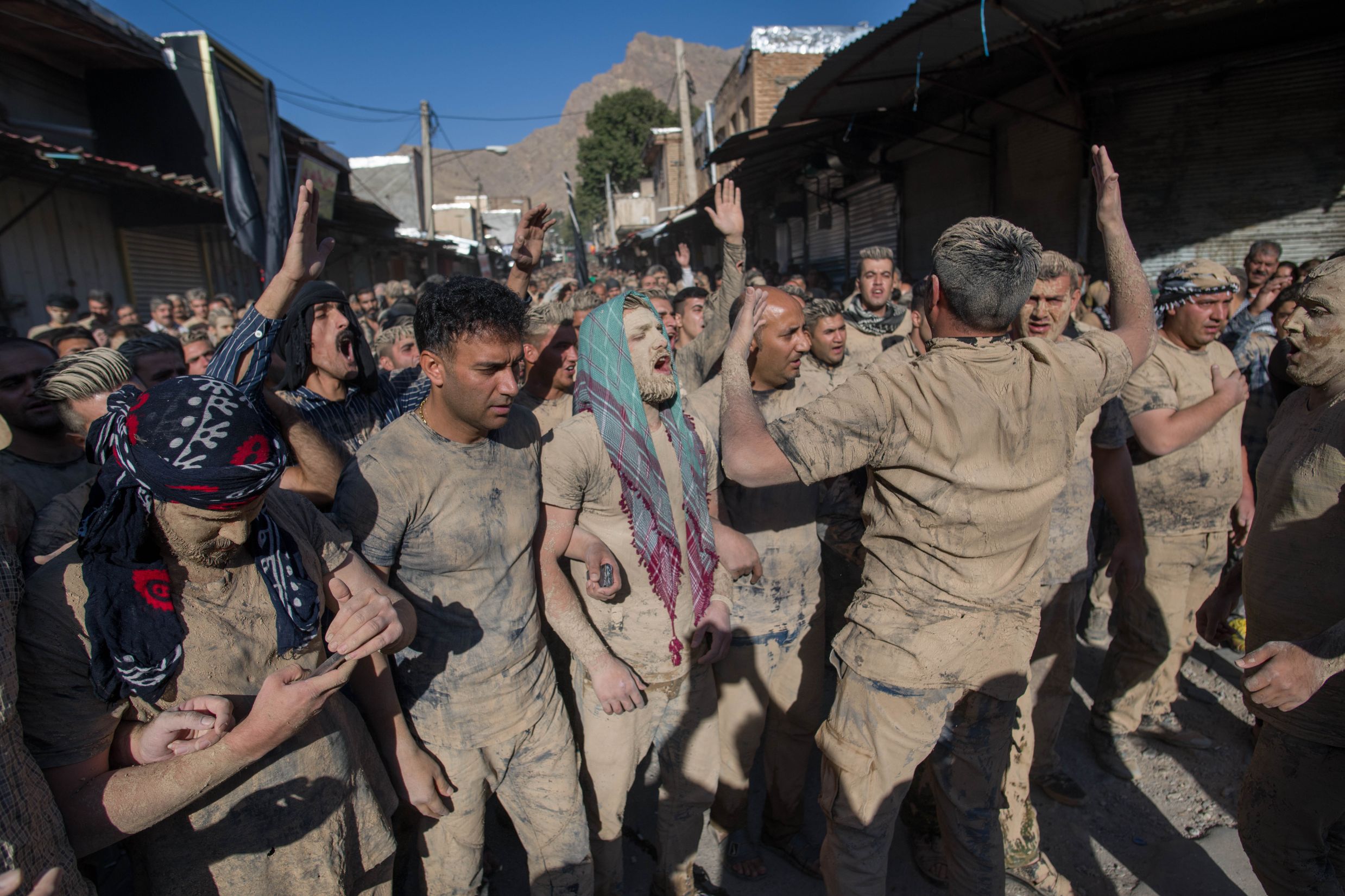
4:15 dimineața e departe de a fi o oră potrivită pentru trezire. Și totuși atit de emotionat eram de apropierea evenimentului care urma sa se petreaca in acea dimineață încât m-am trezit chiar înainte ca alarma de pe cele două telefoane mobile să înceapă să sune. O pereche de baterii ale aparatului foto Nikon D850 se încărcaseră în timpul nopții - două dintre cele șase sau șapte pe care le port mereu cu mine - iar lângă ușă, geanta foto KATA cu cele peste 8 kg de echipament aștepta să fie smulsă și purtată pe umăr. Nici nu am avut nevoie să aprind lumina. Strălucirea gălbuie a lămpii de stradă și clipocitul încărcătoarelor de baterii au fost suficiente impreuna cu miscarile mele mecanice pentru a mă ajuta să găsesc calea către ușă. Pravalit într-un fotoliu masiv din hol recepționerul dormea în timp ce paraseam hotelul tiptil, cu grijă să nu-l deranjez.
„Salaam (cu acea pronunție persona care il transformă într-un “Saloom ” ușor nazal), pe mine ma asteptati?”, il intrebai pe domnul în vârstă care aștepta în fața hotelului, într-o mașină cu geamurile lasate, crezând că era trimis de contactele mele fotografice din Khorramabad. "Buna dimineata. Nu, mă bucur doar de dimineața aceasta de Ashura. ”, a venit răspunsul destul de ciudat, cu un accent clar american. “Dar sunati a american!” “Da, am locuit în America de mai bine de 25 de ani. M-am întors în Iran și in fiecare an ma scol dis de dimineata sa urmaresc ceremonia. Pot să vă duc undeva? ” Bineînțeles, am găsit întâmplarea incredibila, sa întâlnesti un americano-iranian zimbitor în fața hotelului intr-un oras mic si neturistic ca Khorramabad la 4:30 dimineața, dar lucruri mai ciudate mi s-au intimplat în timpul călătoriilor mele (cât de ciudat este este să întâlnesti un coleg de serviciu într-un sat din India?) și dorința lui de a mă lua in masina nu mi s-a părut comportamentul obișnuit al poliției secrete de oriunde în lume. E adevărat, poliția cubaneză mă așteptase într-o Lada din fața “casei particulare” unde trasesem în Santiago, dar era pentru a mă transporta la secția de poliție pentru un interogatoriu, nu pentru a-si oferi serviciile gratuite de taxi. (vezi https://www.dilemaveche.ro/sectiune/societate/articol/cuba-la-moartea-lui-fidel).
Mai mult, mi-a venit în minte un pasaj din cartea „Oglinzile persane” a lui Elaine Sciolino: “Nasser Hadian, un prieten care este profesor de științe politice la Universitatea din Teheran, a petrecut Ziua Crăciunului cu mine și familia mea la Washington, DC. Nasser avea o educatie americana și se bucurase cândva de o înfloritoare carieră academică în Statele Unite. El și soția sa, Shirin Parvini, farmacolog, trăiau bine. Dar Nasser a renuntat la toate ca să plece acasă. Spunea că nu mai poate sta departe de Iran. Soțul meu, Andy, nu-si putu crede urechilor. Cum poti renunța la o poziție la facultate în Statele Unite pentru a te întoarce în Iran? îl întrebă pe Nasser. “Poezia”, a spus Nasser. “Poezia mistică. Mi-a lipsit sunetul poeziei. ”Pentru a-și dovedi ideea, ridica o copie a lui Hafiz de pe unul din rafturile mele de carte și ne citi poezii în persană.”
Cu câteva zile mai devreme, tocmai începusem să mănânc o portie de sarmale cu varza într-un restaurant de familie, unde fiul proprietarului se așezase la masa mea, oferindu-și serviciile pentru a ma informa despre Ashura în Khorramabad, când un tip din 40 de ani. se apropie de mine cu un zâmbet întrebând: „Vorbiti romaneste?”. Mi-a luat citeva secunde să-mi dau seama că folosise limba română și de îndată ce am spus da, a început să-mi explice cât de surprins și fericit este și cum a aflat că sunt român. Era un client obișnuit al restaurantului unde venea în timpul pauzei de prânz și când m-a văzut, un străin înalt, cu ochii albaștri care nu arăta în special iranian, l-a întrebat pe fiul proprietarului de unde vin. Mi-a mărturisit că i s-a parut incredibil sa auda “România”. “Vreau să fii fericit aici. Am fost foarte fericit în România. Am petrecut acolo șapte ani la sfârșitul anilor 90 și, sincer vorbind, mi-au trebuit trei ani să mă readapt în Iran când m-am întors.” Inutil să spun, când am vrut să-mi plătesc prânzul, am descoperit că fusese deja platit.
In fata hotelului nu a durat mult până la aparitia lui Amir, ghidul meu pentru ședința foto de dimineață. Ashura este sărbătorită atât de musulmani suniti cât și de șiiti, dar din diferite motive. În timp ce sunnitii sărbătoresc Ashura în amintirea despărțirii Mării Roșii, ceea ce i-a permis lui Moise și israeliților să scape de armata faraonului, șiitii comemoreaza moartea lui Hussein, nepotul profetului Mohammed și al treilea imam siit, in bătălia din Karbala, aflat în Irakul de astăzi, în 680 e.n. Contextul este că, după moartea profetului, în 632 CE, a apărut o dispută între o majoritate care dorea titlul de calif pentru Abu Bakr, un însoțitor apropiat al profetului, și o minoritate, numită ulterior Shi´a, care l-a susținut pe vărul și ginerele lui Mohammed, Ali. Acesta nu a devenit calif, dar a devenit pentru siiti primul imam, adică un lider desemnat divin. În 680 e.n., în timpul lunii Muharram, califul ummayad Yazid i-a ordonat lui Hussein să-i promită loialitate, pe care acesta a refuzat-o, considerând că domnia lui Yazid este nedreaptă și nelegitimă. Rezultatul a fost uciderea și decapitarea lui Hussein și a majorității familiei și însoțitorilor săi în bătălia de la Karbala. Siitii considera martiriul lui Hussein o inspiratie in lupta lor pentru dreptate și împotriva opresiunii de către autoritatile de stat.
Ashura este comemorata diferit în diferite orașe ale Iranului și, dupa o usoara ezitare intre Zanjian si Khorramabad, alegerea a cazut asupra celui din urma, unde locuitorii săi comemorează moartea imamului Hussein acoperindu-și fețele și hainele cu noroi uscat apoi la ruguri aprinse in strada.
„Unde vrei să mergi? Unde ti-a placut ieri seara, lângă bazar? ”, ma întreba Amir și impreuna plecaram spre o răscruce mai sus de bazar. Știam la ce să mă aștept, dar ceea ce vedeam îmi depășea si cea mai vie fantezie: o duzină de bărbați îmbrăcați în haine pline de noroi erau strânsi în jurul unui foc mare și, la câțiva metri distanță, obiectul amintirii mele – o piateta trapezoidala împodobita cu tuburi strălucitoare de neon si steaguri cu scriitura iraniana, care se termina spre marginea străzii într-o balta de noroi în care fiecare nou-venit primea imersiunea rituală. Câțiva fotografi locali dadeau deja tarcoale, concentrați în mare parte asupra bărbaților din jurul focului.
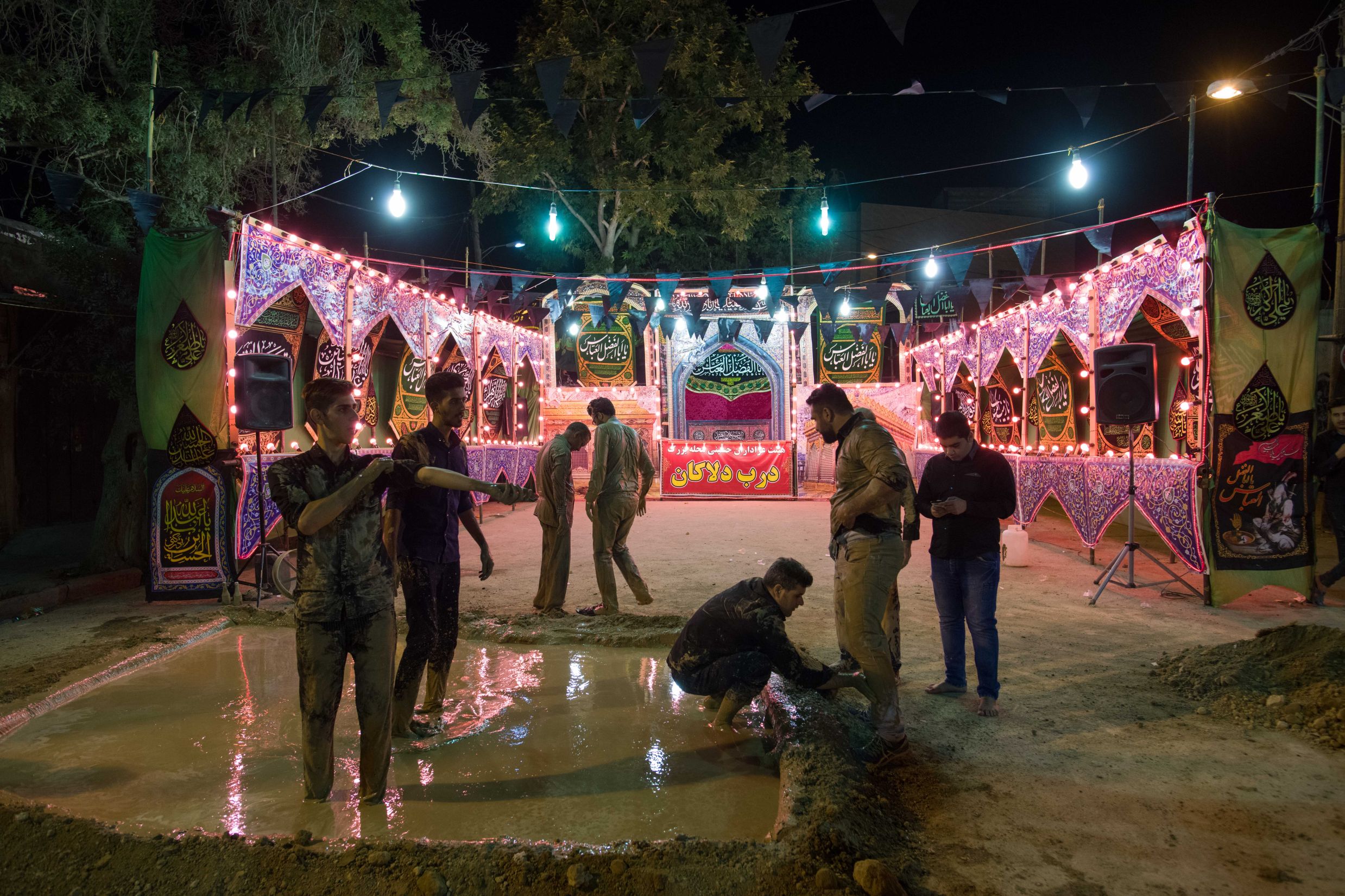
„Hai să mergem într-un alt loc!”, zise Amir după un sfert de oră, si el fotografiind in continuu. Am urcat pe o stradă spre orașul vechi și am ajuns la un alt foc și un alt grup de oameni. În mod surprinzător, erau mulți copii de scoala primara printre ei, si mi-am amintit de ceremoniile de Paște din București, când obișnuiam să ieșim cu cozonaci si vin și să cutreierăm străzile din cartierul nostru până la primele ore ale dimineții. Nu a durat mult și câțiva copii eri cu capul acoperit cu eșarfe menite să-i protejeze de focul patrunzator s-au plantat în fața mea îndreptându-și degetele către ei înșiși: „Foto?” Foto! Și inca o poza si inca una a fiecarui copil trecut prin fata aparatului ... Apoi, o altă piață dintr-un cartier din apropiere, aici din nou un bazin de nămol, unde un bărbat bătrân, cu barbă, cu ambele picioare în amestecul întunecat pe jumătate vâscos, manjea chipurile și hainele negre ale participanților la ceremonie. Din când în când un credincios se rostogolea cu 360 ° în noroi și ieșind cu namolul picurând se grăbea la foc pentru a coace acel amestec întunecat într-o crustă brună.

Încet, întunericul nopții făcu loc luminii trandafirii a răsăritului și ne îndreptaram spre o stradă unde întâlniram pentru prima dată femei. Femei locale, majoritatea venite să vadă și unele, putine, care să se acopere în noroi, nu zglobiile fotografe ale diminetii. În abaie neagră, atât tinere cât și bătrâne, umpleau trotuarele uitându-se la spectacolul anual care se desfășura înaintea ochilor.
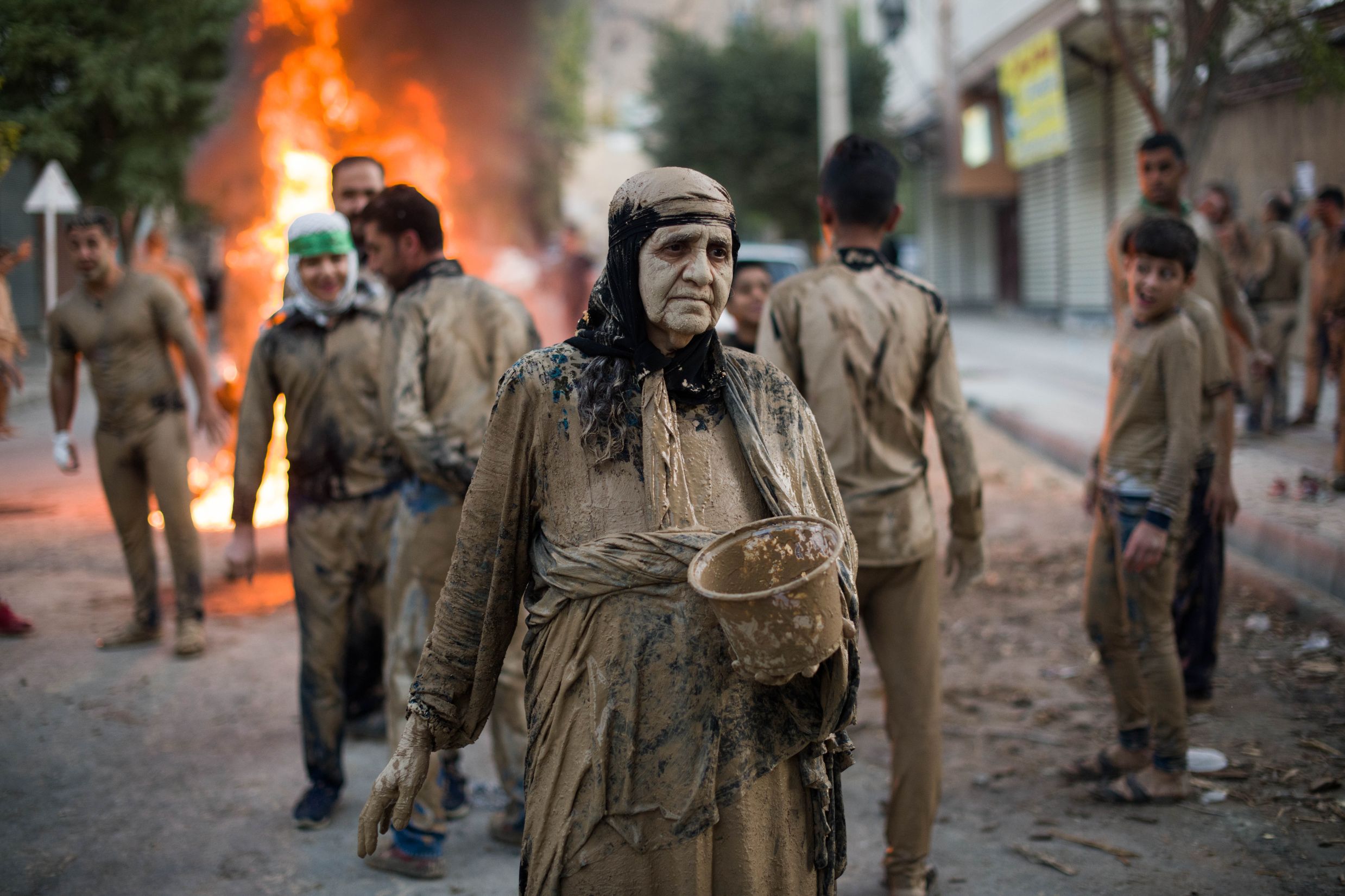
În mijlocul străzii, o femeie bătrână imbratisind o găleată de noroi il administra într-un mod foarte asemanator unui ritual creștin de binecuvântare. Deodată imi văzui vecinii alergind mai jos, spre mijlocul străzii, unde se desfășura o scenă singeroasa: sub privirile curioase ale mai multor copii mici, doi tineri țineau o oaie în timp ce un al treilea, un barbat mai in virsta, ii tăia beregata lăsând o balta de sânge sub și în jurul oii. Sună brutal, crud, dar cum sint obisnuit să fac paralele între culturi și religii pentru a realiza in ce masura un obicei e bizar si unic, mi-am amintit imediat de o scenă din frageda mea copilărie, când văzusem un porc uriaș alergând cu un cuțit în gât, urmat de mai mulți bărbați care nu puteau ține pasul. Și asta era în București, pe strada Avrig, la zece minute de centrul orașului ...
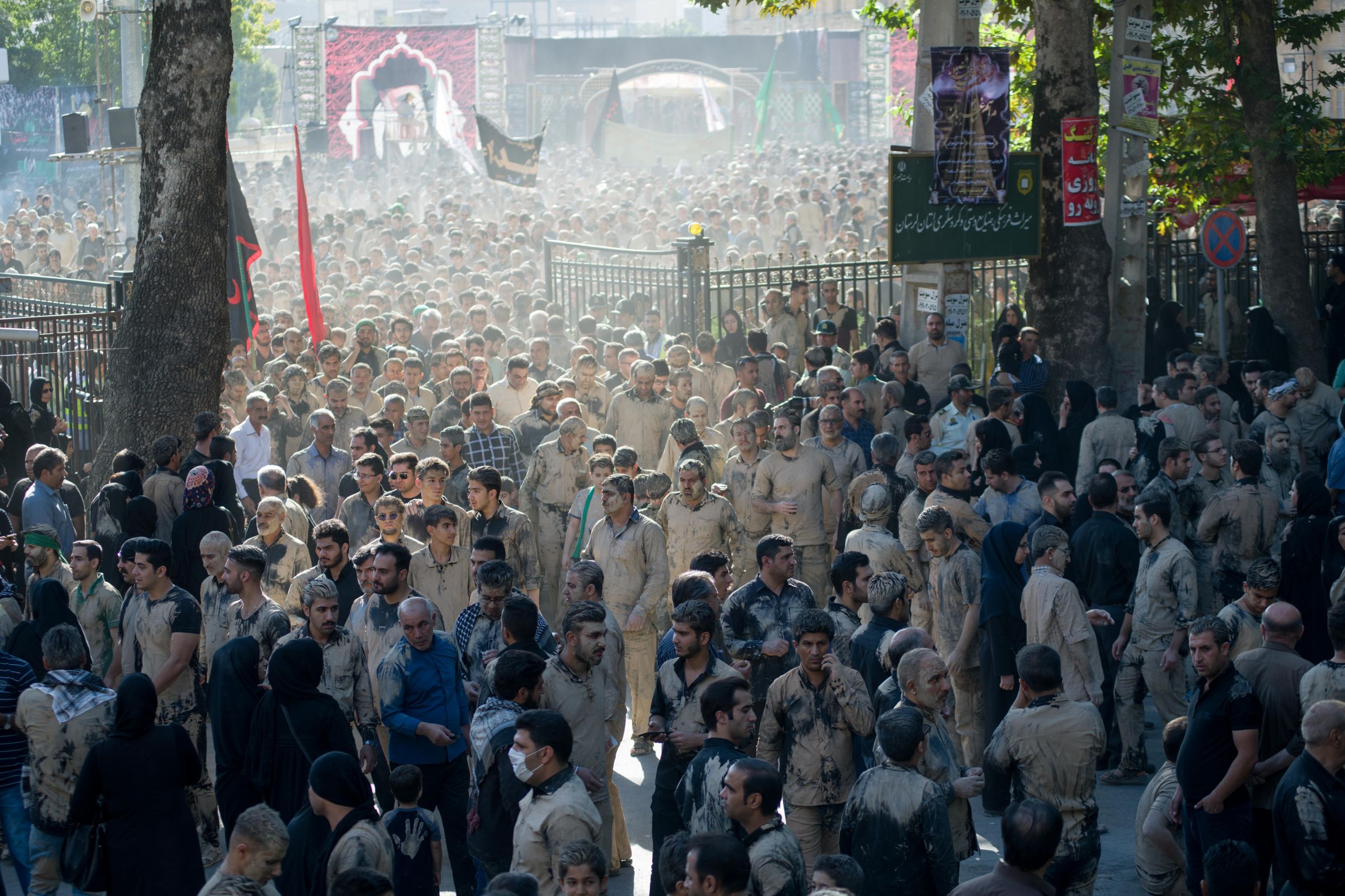
Dar Ashura nu se terminase inca. Am urmărit mulțimea de-a lungul unei străzi coborind in linie dreapta, până la o incintă similară cu o parcare. Aici, din spatele barierelor metalice, femeile îmbrăcate în negru urmăreau grupuri successive de bărbați care intrau in incinta si scandau cel de pe acum cunoscutul „Ya Hossein! Ya Hossein” insotit de plesnituri alternative ale palmelor peste piept. Punându-mă cu spatele la soare și la scenă am filmat câteva portrete de bărbați cu fețe noroioase, după care am văzut câțiva tineri fotografi iranieni pe acoperișul unui camion. Recunoscindu-ma ca pe unul dintre putinii fotografi straini intilniti dimineata, inainte de rasaritul soarelui, într-un spectacol de solidaritate a fotografilor s-au grăbit să mă ajute să urc pe camion. Priveliștea era mult mai impresionantă de sus. Dintr-o singură privire puteai acoperi cohortele de credincioși acoperiți de noroi care curgeau în interiorul și în afara incintei, imaginile martirilor războiului dintre Iran si Irak care impodobeau curbura străzii, bătrânii odihnindu-se la umbra copacilor, tații cu copiii pe umeri, pancartele uriașe împodobite cu citate coranice.
Am petrecut încă o oră fotografiând mulțimi de bărbați care se strecurau pe aleile înguste ale orașului vechi, am asistat la sosirea imamului de rugăciunea de vineri și, pentru a nu stiu cita oară, am putut fotografia spectacolul strazii de pe platformă, aproape de bodyguarzi, organizatori și de imam.
În drum spre hotel, o altă întâlnire intimplatoare cu un iranian, fost inginer, instruit în SUA, care preda acum limba engleză în Isfahan, a dus la o dugheana deținută de fiul său, unde mi s-a oferit o băutură rece, bineinteles gratis.
Era trecut de prânz și fotografiasem timp de opt ore. Mai ales în ultimele două ore visam să mă culc și să dorm un binemeritat somn, dar acum, în camera mea, eram încă excitat de tot ceea ce văzusem. Curiozitatea fotografului de a-si vedea rezultatele muncii a fost mai puternică și, în loc să dorm, am descărcat fotografiile rememorind fiecare moment al dimineții. A fost ultima mea zi în Khorramabad, dar ce zi!
Ashura – Days of mourning - Khorramabad, Iran 2019
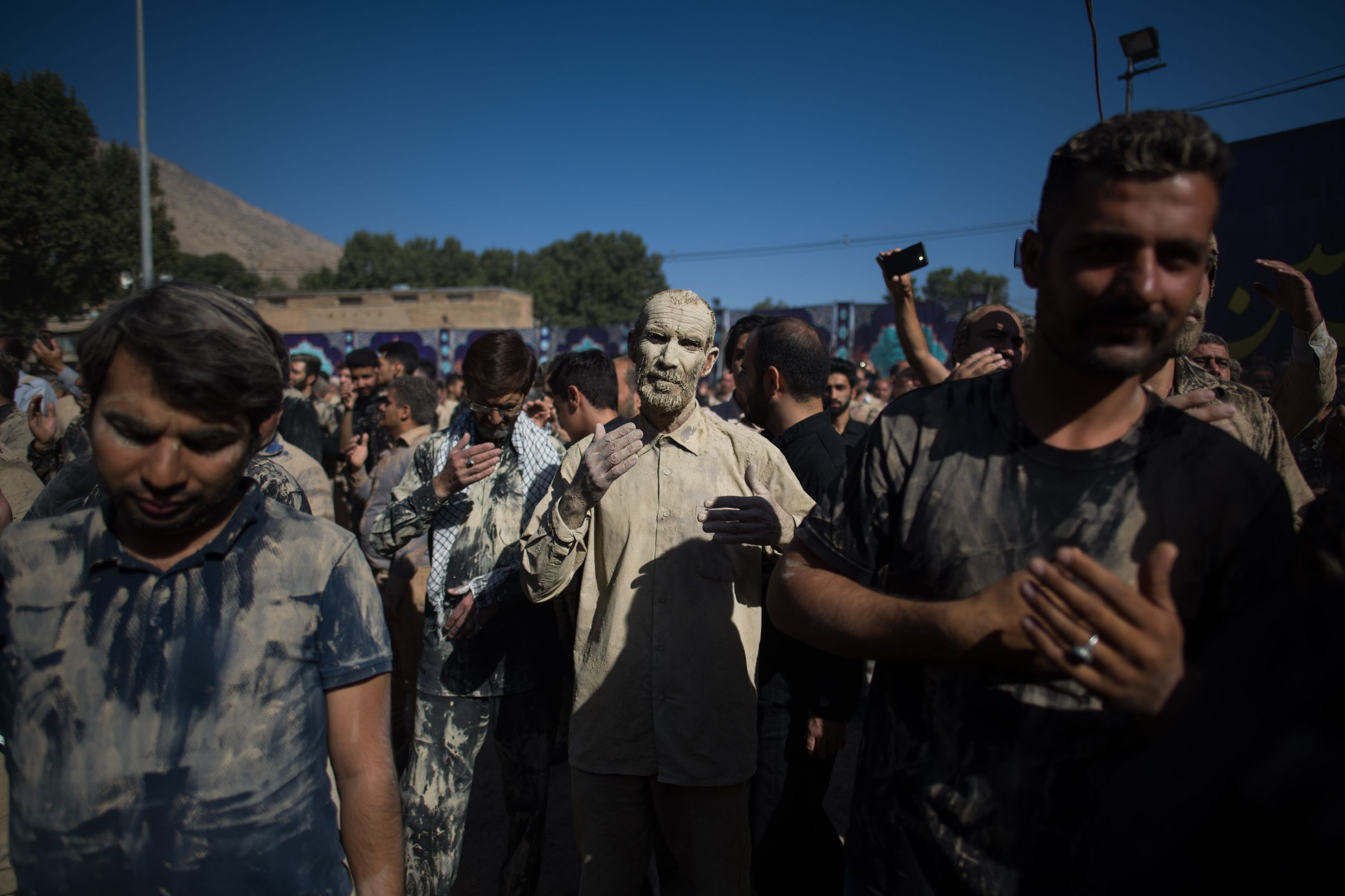
4:15 in the morning is hardly a suitable hour for waking up. And yet, so excited was I about that morning´s event that I woke up even before the alarm clock on two mobile phones started to ring. A pair of Nikon D850 camera batteries had charged during the night - two of the six or seven that I always carried with me – and by the door the more than 8 kg heavy KATA camera bag was waiting to be snatched and carried on one shoulder. I didn´t even need to turn on the light. The yellowish glow of the street lamp and the blinking of the battery chargers were sufficient addition to my mechanical moves to help me find the way to the door. Slouched in a massive armchair in the lobby the receptionist was sleeping while I was exiting the hotel careful not to disturb him.
“Salaam (with that Farsi pronunciation that turns it into a slightly nasal “Saloom”), are you waiting for me?”, I asked the elderly gentleman waiting in front of the hotel in a car with rolled down windows, thinking that he was sent by my photo contacts in Khorramabad. “Good morning. No, I´m just enjoying the Ashura morning.”, came the rather strange answer in a clearly discernible US American accent. “But you sound American!” “Yes, I lived in America for more than 25 years. I returned to Iran and I always drive out to see this ceremony from early morning. Can I drive you anywhere?” Of course I found this a fantastic occurence, meeting a smiling US-Iranian in front of my hotel in Khorramabad at 4:30 in the morning but stranger things have happened to me during my trips (how strange is it to meet a workmate in a village in India?) and his willingness to drive me around didn´t sound like the usual behaviour of the secret police anywhere around the world. Truth be said, the Cuban police had waited for me in a Lada in front of the casa particular where I was lodged in Santiago but it was to take me to the police station for an interrogation, not to offer their services for driving me around (see https://www.dilemaveche.ro/sectiune/societate/articol/cuba-la-moartea-lui-fidel).
Moreover, a passage of Elaine Sciolino´s “Persian mirrors” book came to mind: “ … Nasser Hadian, a friend who is a political science professor at the University of Tehran, spent Christmas Day with me and my family in Washington, D.C. Nasser is American-educated and once enjoyed a flourishing academic career in the United States. He and his wife, Shirin Parvini, a pharmacologist, lived well. But Nasser gave it all up to go home. He said he couldn´t stay away from Iran any longer.
My husband, Andy, was incredulous. How could you give up a tenure-track college teaching position in the United States to go back to Iran? he asked Nasser.
“The poetry”, Nasser said. “The mystical poetry. I missed the sound of the poetry.” To prove his point, he took a copy of Hafiz from one of my bookshelves and read poems to us in Persian.”
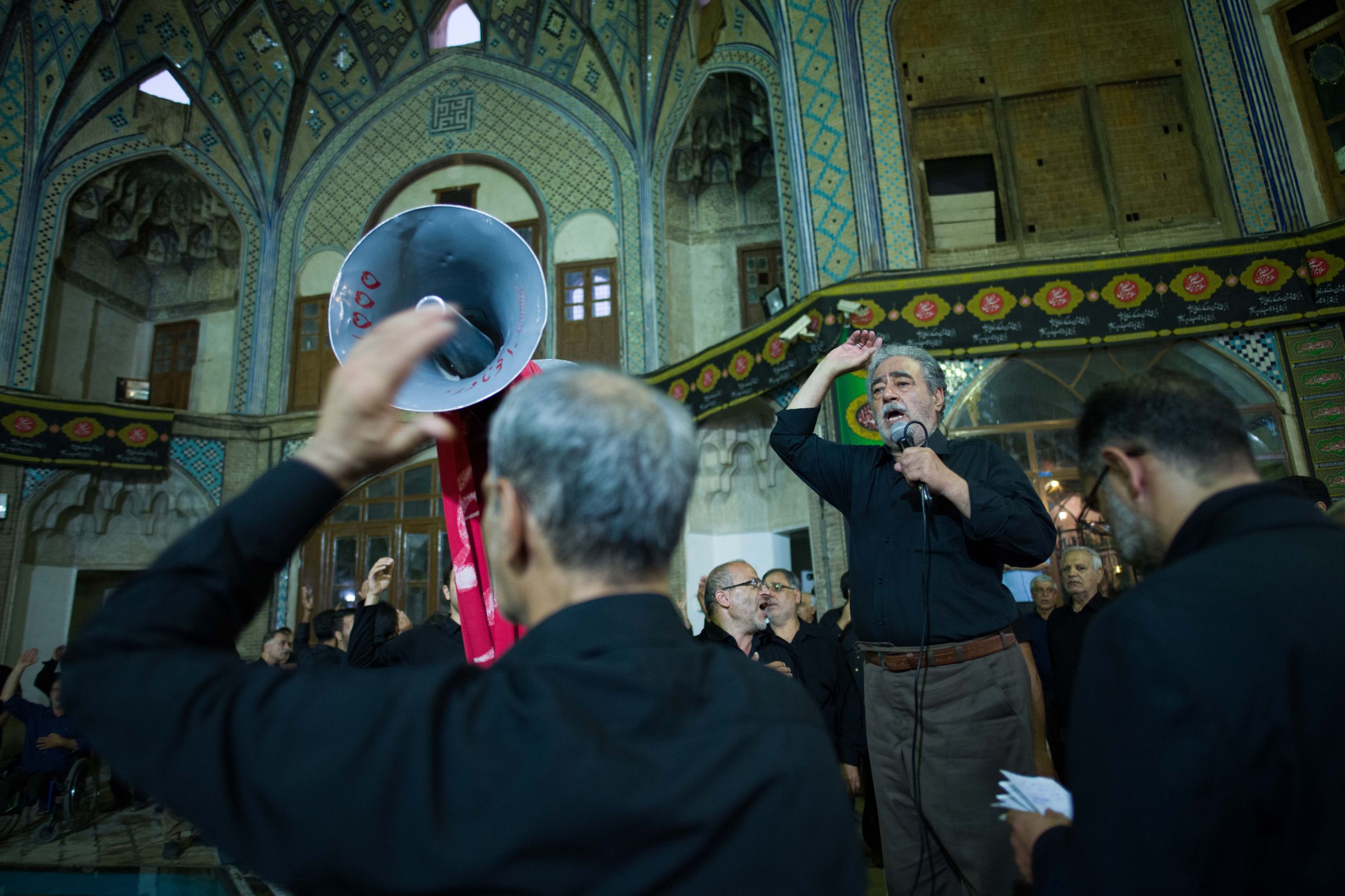
A couple of days earlier I had just started eating a cabbage “dolme” dish in a family restaurant where the owner´s son had sat at my table offering his services in finding out anything about Ashura in Khorramabad when a guy in his 40´s approached me with a smile asking: “Vorbiti romaneste?” (Do you speak Romanian?). It took me a while to realise that he had used Romanian and as soon as I said yes he started explaining how surprised and happy he was and how he found out I was Romanian. He was a regular customer of the restaurant where he came during his lunch break and when he saw me, a tall, blue-eyed stranger not looking particularly Iranian, he asked the owner´s son where I was from. He confessed he was dumbstruck to hear “Romania”. “I want you to be happy here. I was very happy in Romania. I spent there seven years in the late 90´s and, honestly speaking, it took me three years to readapt to Iran when I came back.” Needless to say, when I wanted to pay my lunch I discovered that he had picked up the tab.
It took only a couple of minutes until I saw Amir, my cicerone for the Ashura morning photo session. Ashura is celebrated by both Sunni and Shi´a Muslims but for different reasons. While the Sunni celebrate Ashura in commemoration of the parting of the Red Sea allowing Moses and the Israelites to escape the Pharaoh´s pursuing army, the Shi´a lament the death of Hussein, grandson of prophet Muhammad and the third Shi´a imam in the battle or Karbala, in today´s Iraq in 680 CE. The background is that after the prophet´s death in 632 CE a dispute emerged between a majority who wanted the title of caliph for Abu Bakr, a close companion of the prophet, and a minority, later called Shi´a, who supported the prophet´s cousin and son-in-law, Ali. Ali did not become a caliph but he became for the Shi´a the first imam, i.e., a leader divinely appointed by God. In 680 CE, during the month of Muharram, the Ummayad caliph Yazid ordered Hussein to pledge allegiance to him, which he refused, considering Yazid´s rule to be unjust and illegitimate. The result was the killing and beheading of Hussein and most of his family and companions in the battle of Karbala. For the Shi´a Hussein´s defiance of caliph Yazid and his subsequent martyrdom are seen as a fight for justice and against oppression by state authority.
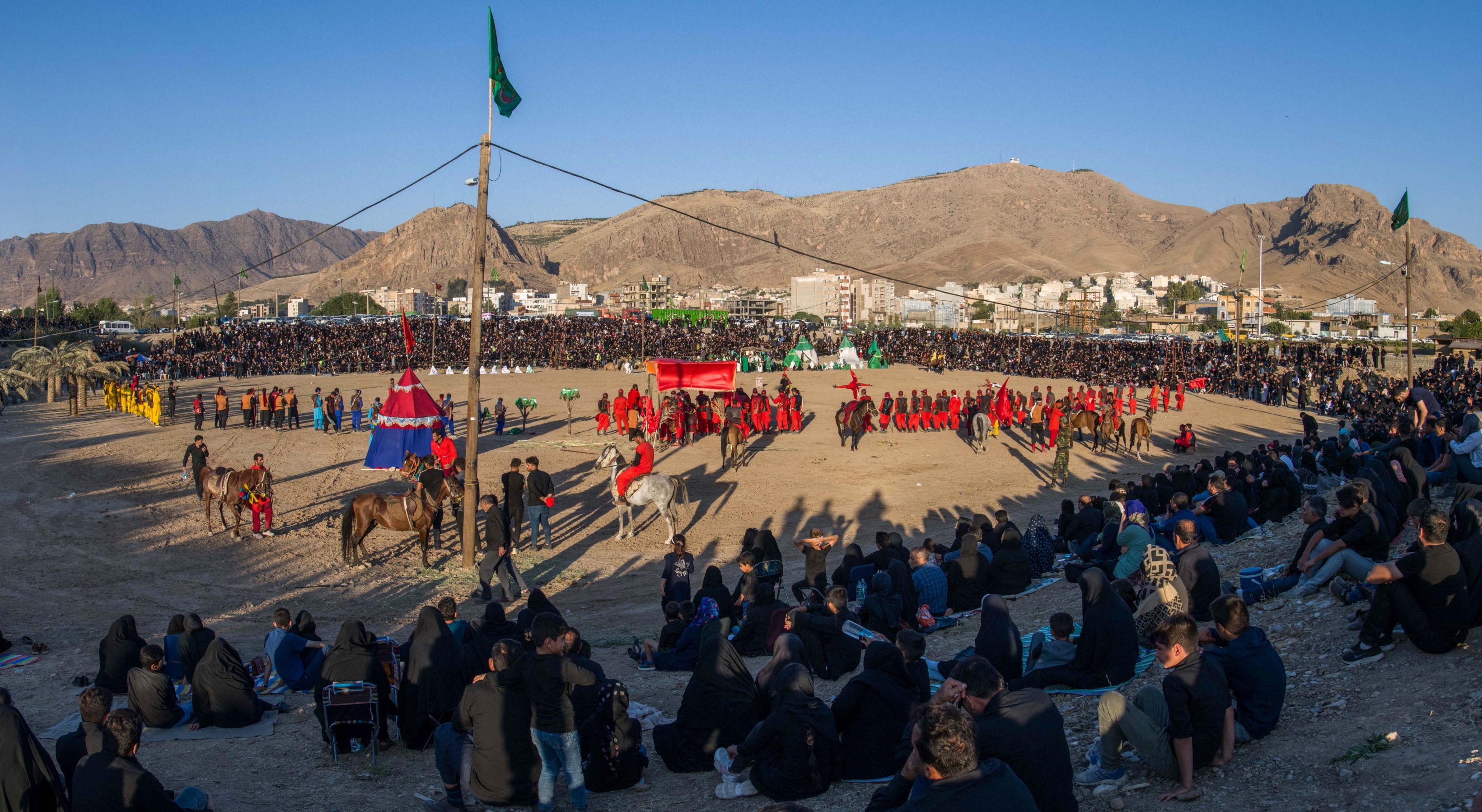
Ashura is observed differently in different cities of Iran and I had decided for Khorramabad because of the particular manner in which its inhabitants commemorate the death of Imam Hussein, by covering their faces and clothes in mud which dries by bonfires burning near the mud pools.
“Where is it you want to go? To that place that you liked yesterday, the one near the bazaar?”, asked Amir and off we went to a crossroads uphill. I knew what to expect but what I saw exceeded my most colourful fantasy: A dozen men in mud-caked clothes gathered around a big fire and, a few yards away, the target of my recollection - a trapezoidal site adorned with neon glowing luminescent tubes and ending streetside in a mud pool in which newcomers got their ritual immersion. A few local photographers were already roaming around concentrated mostly upon the men surrounding the fire.
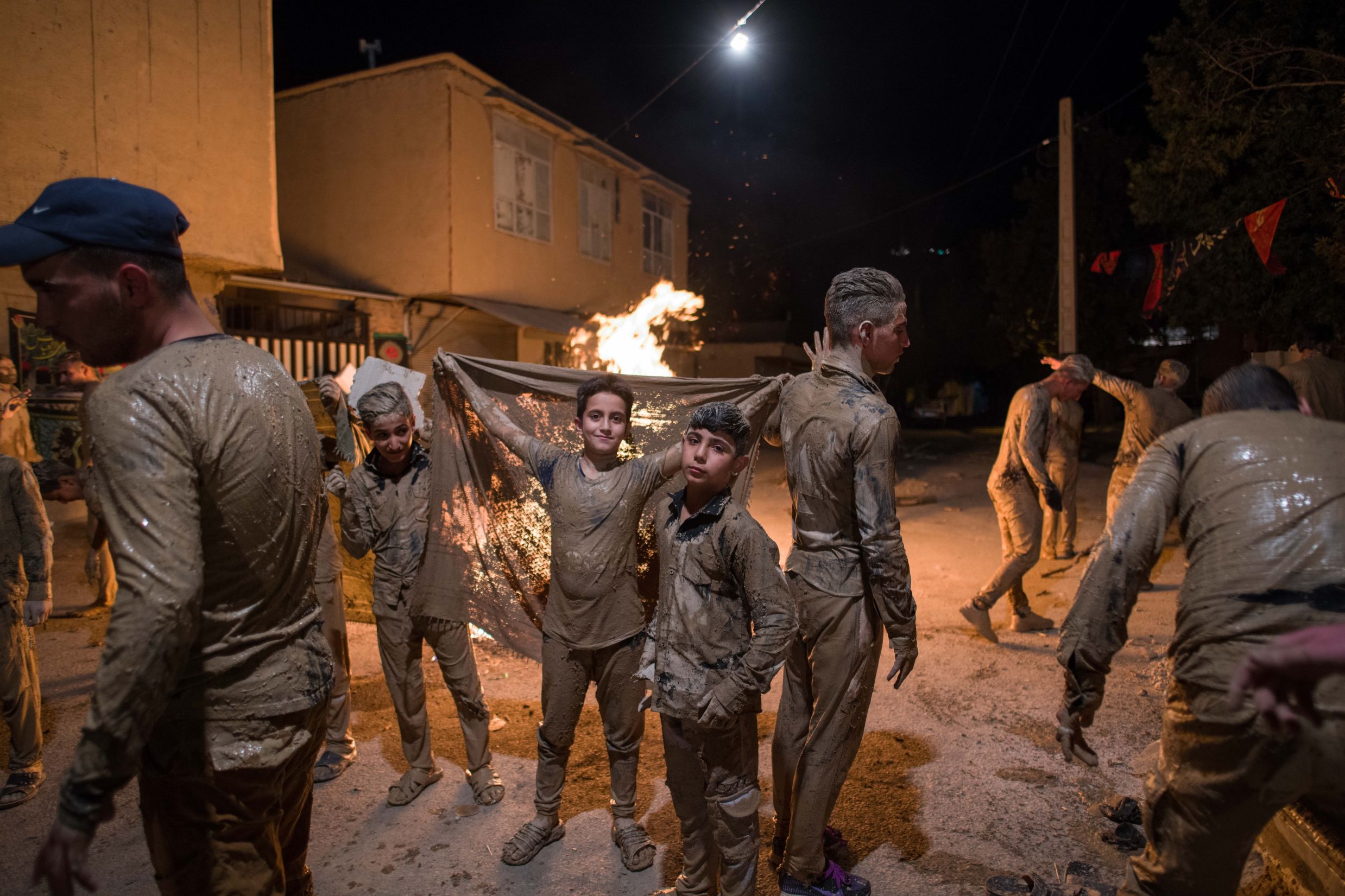
“Let´s go to another square!”, said Amir after a quarter of an hour, himself very busy photographing. We climbed a street towards the old town and came to another fire and another group of people. Unsurprisingly, there were many pre-teen kids among them, which reminded me of the Easter ceremonies in Bucharest, when we used to go out with Easter cakes and roam the streets in our neighbourhood until the early hours of the morning. It didn´t take long and a couple of young boys covering their heads with scarves meant to protect them from the scorching fire planted themselves in front of me pointing their fingers at themselves: “Photo?” Photo. And another and another. Then another square in a nearby neighbourhood, here again with a mud pool where an old, bearded man with both his feet in the half-viscous dark mixture was painting the faces and the black clothes of the participants to the ceremony. From time to time a believer would roll 360° in the mud and come out dripping and rushing to the fire to bake that dark mixture into a hazelnut brown crust.
Slowly the dark of the night made way to the pink light of daybreak and we headed to a street where for the first time we met women. Local women coming to see and some to cover themselves in mud, not the busy photographers of early morning. In black abayas, both young and old, they were lining up the street looking at the yearly spectacle that unfolded before their eyes. In the middle of the street an old woman with a mud bucket was administering the mud in a way that resembled much a Christian ritual of blessing. Suddenly I saw my neighbours rushing down to the middle of the street where a gruesome scene unfolded: Before the curious gaze of small children two young men were holding down a sheep while a third, old one was cutting the sheep´s throat leaving a pool of blood under and around it. It sounds brutal, cruel but as I´m used to draw parallels between cultures and religions I immediately remembered a scene of my early childhood when I saw a huge pig running with a knife in its neck followed by several men who couldn´t keep pace. And that was in Bucharest, not far from the very centre of the city …
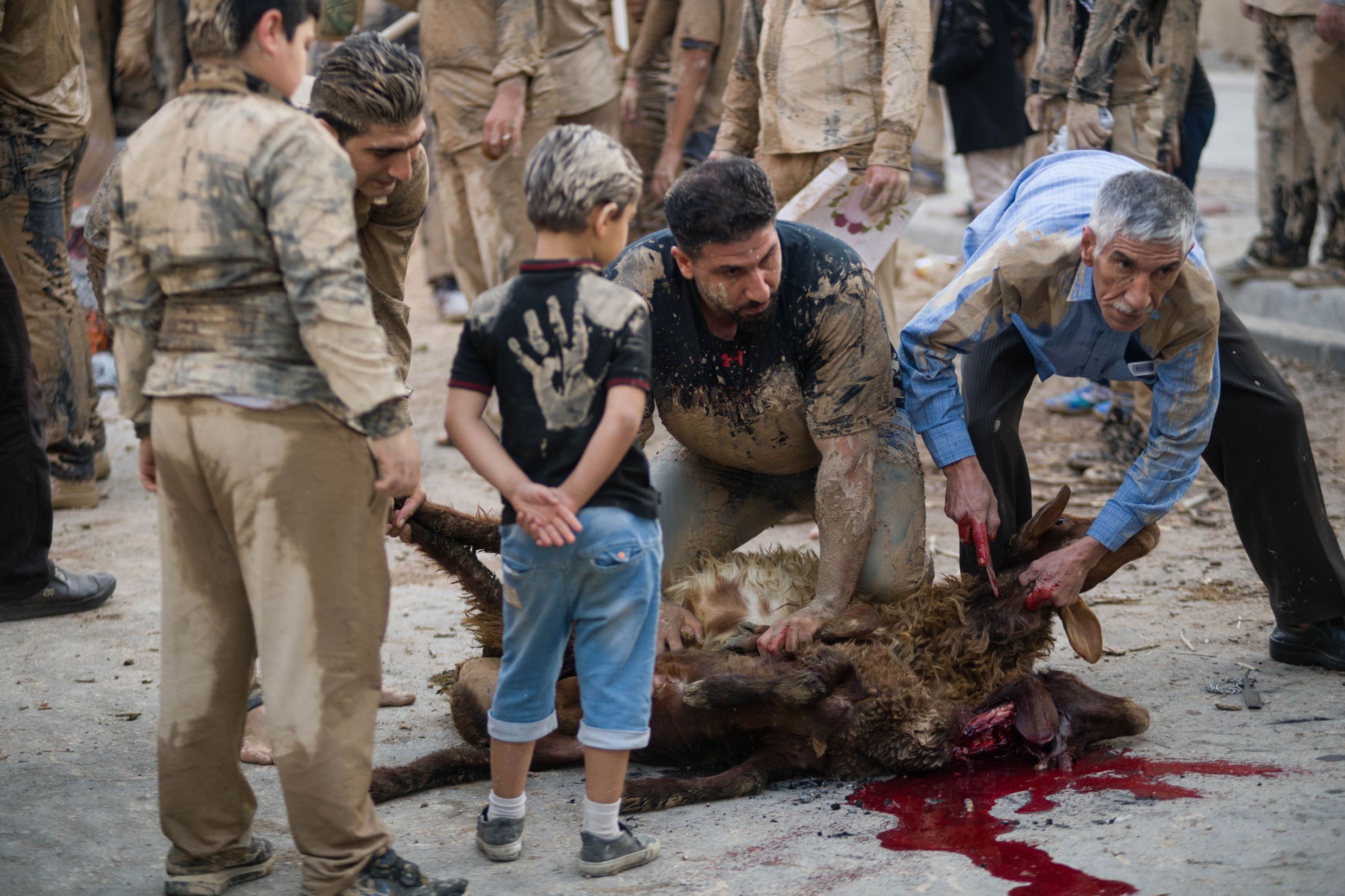
But the Ashura was not over. I followed the crowd along a downward sloping street to an enclosure similar to a parking lot. Here, from behind metal barriers women dressed in black were watching crowds of men chanting the by now familiar “Ya Hossein!”. Placing myself with the back to the sun and the stage I shot some portraits of men with muddy faces whereafter I saw several young Iranian photographers on the roof of a truck. Some of them recognised me from earlier on and, in a show of photographers´ solidarity, rushed to help me get on top of the truck. The view was much more impressive from above. At one glance one could grasp the cohorts of mud-covered believers flowing in and out of the enclosure, the pictures of the martyrs of the Iran-Iraq war lining the bend of the street, the old people resting in the shade of the trees, the fathers carrying their children on the shoulders, the giant banners adorned with Koranic quotations.
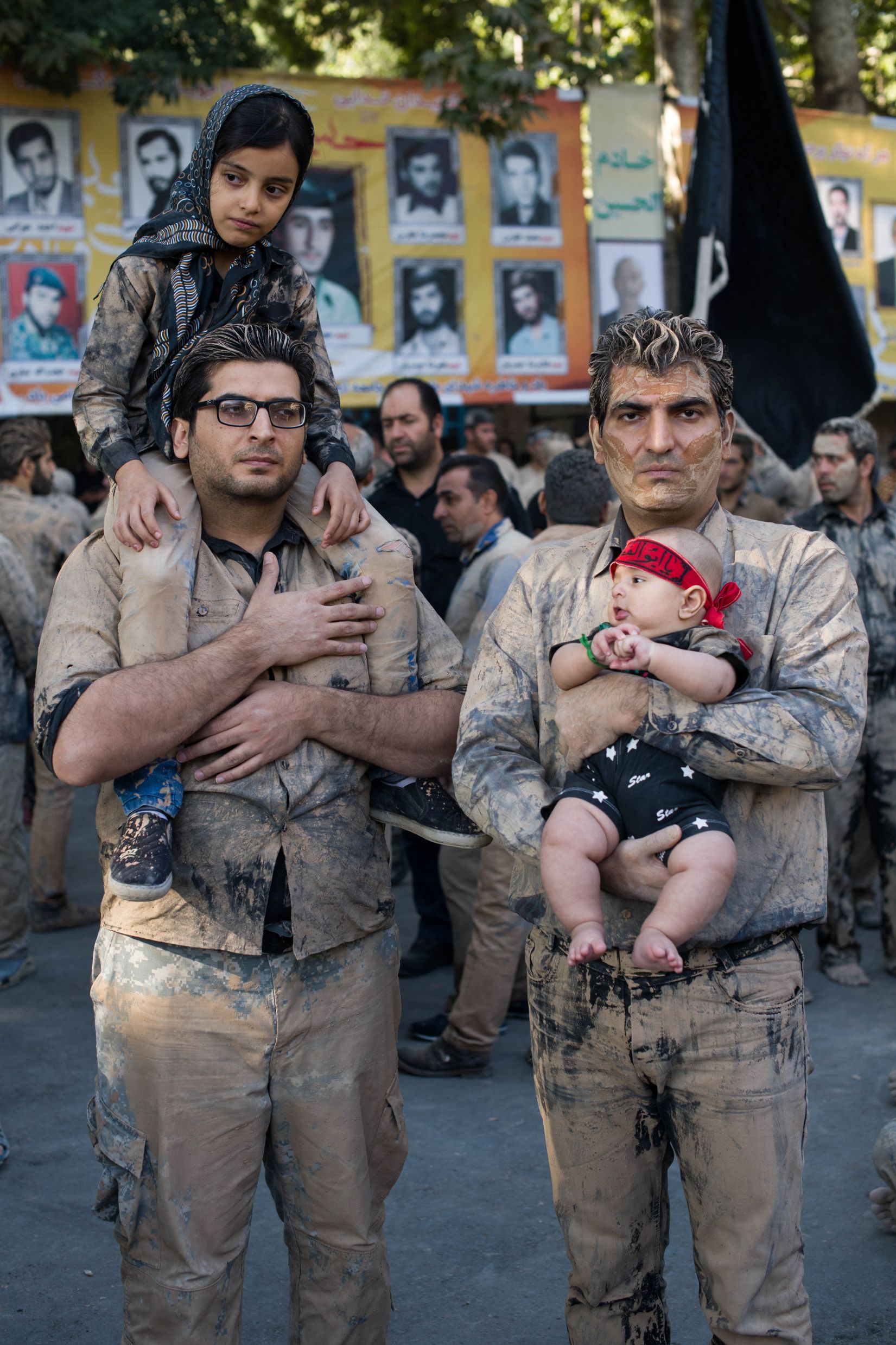
I spent another hour photographing crowds of men snaking through the narrow alleys of the old town, witnessed the arrival of the Friday Prayer Imam, and for the umpteenth time I could photograph the excited chanting masses from the platform, near the bodyguards, the organisers and the imam.
On the way to the hotel another chance meeting with a US-trained Iranian, ex-engineer, now teaching English in Isfahan, led to a market owned by his son where I was offered a cold drink. Of course, free.
It was well past noon and I had been photographing for eight hours. Especially the last couple of hours I was dreaming of lying down and getting a well-deserved sleep but now, in my room, I was still high on everything I had seen. The photographer´s curiosity to see the fruits of one´s labour was stronger and instead of sleeping I downloaded the photos remembering each moment of the morning. It was my last day in Khorramabad but what a day!
